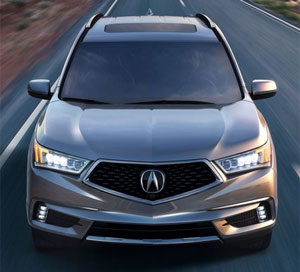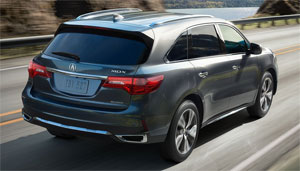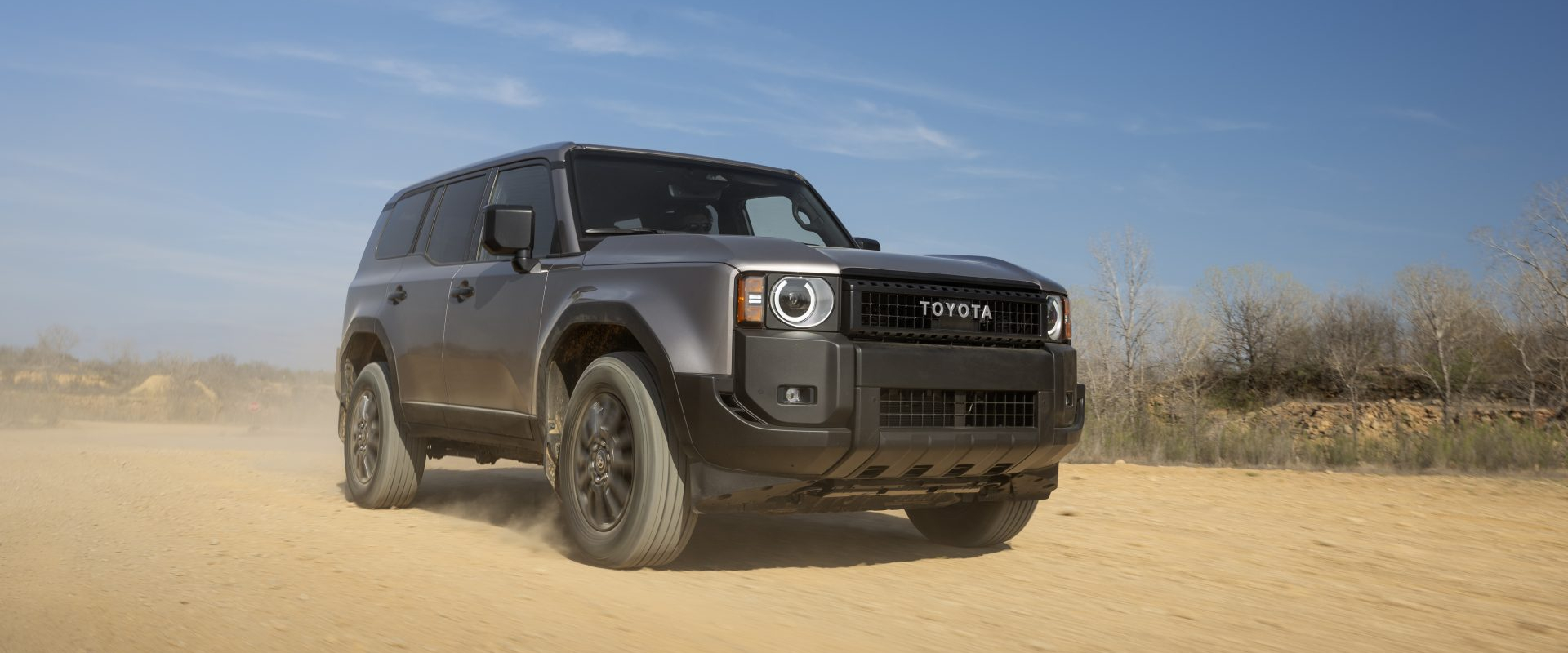2017 Acura MDX Sport Hybrid
When Acura gave the 3rd generation MDX crossover a new look halfway through its lifecycle, it would have been easy to think that was it. But not for Honda’s luxury brand. For this engineering minded company the Sport Hybrid Version of the 2017 MDX is the real headline. Of course the only way to see how well “sport” and “hybrid” work together is to go for a drive.
The 2017 Acura MDX Sport Hybrid is the brand’s first gasoline-electric utility vehicle. In keeping with Acura’s hybrid tradition, the internal combustion engine is matched with three electric motors, like we’ve seen in the RLX Sport Hybrid sedan, and the NSX supercar.
On that score, the MDX closely mirrors the RLX’s all-electric Super-Handling All-Wheel Drive setup with one electric motor up front, and two in the rear.
The rear motors provide both go and sharper turns through torque vectoring, sending cornering power, when needed, to an outside rear wheel, while simultaneously braking an inside rear wheel.
 And, just as in the Sport Hybrid RLX, it all works quite seamlessly, as power is constantly being distributed to different wheels in different amounts at all times.
And, just as in the Sport Hybrid RLX, it all works quite seamlessly, as power is constantly being distributed to different wheels in different amounts at all times.
Conventional power is from the well regarded corporate 3.0-liter V6, here rated at 257-horsepower, or 33-less than the 3.5 liter V6 on the standard MDX. But, since this is a hybrid with a trio of electric motors, the total output is boosted to 321-horsepower and 289 lb-ft. of torque.
Up front is a 47kW electric motor, built into the 7-speed DCT transmission. Each rear wheel is driven by a 36kW motor. That draws power from a 72-cell, 1.3-kWh lithium-ion battery pack under the driver’s seat.
The hybrid hardware’s 200 plus pounds of extra weight lowers the Sport Hybrid’s center of gravity by an inch compared to the standard MDX, but actual rough road ground clearance remains the same.
On the twisting roads east of Seattle, Washington, we found that between the near instant power vectoring, and rapid response of the active dampers, the MDX Sport Hybrid easily mastered uphill switchbacks at speed.
The Sport Hybrid adds a 4th drive mode, Sport Plus, making this MDX even more of a driver’s SUV. It disables EV only driving, and adds more battery assist on takeoff.
There are steering wheel mounted paddle shifters, but we didn’t find the DCT needing an extra pair of hands. The SH-AWD torque vectoring is neither seen nor heard. Of course, you can actually see it working on the upper display screen, and certainly can feel it with the Sport Hybrid’s confident road manners in the wet and dry.
 Like all MDXs, the Sport Hybid comes with three row seating, but in only two trims.
Like all MDXs, the Sport Hybid comes with three row seating, but in only two trims.
The Technology Package makes room for seven; Advance has 6 seats with captain’s chairs in the second row.
The front cabin environment maintains the level of understated luxury that we’ve come to expect from Acura. Stainless steel sport pedals are one of the subtle signs that you’re in the Sport Hybrid. All MDXs now include AcuraWatch safety and driver-assistance.
The Sport Hybrid’s technology leaves plenty of practical room inside. Cargo space behind the rear seat remains the same as the standard MDX at 15 cu-ft. That increases to 38.4 cu-ft behind the second row, and 68.4 cu-ft with all the rear seats out of the way.
Outside, the hybrid only reveals itself through a small badge on front fenders…and a blue “S-H” on the Super Handling All-Wheel Drive badge at the rear. The side sills and front and rear skid garnishes are the same color as the body. Other than that, it’s a carbon copy of its gasoline-only twin… including the new and far more attractive diamond pentagon grille.
 One thing you won’t see here is a trailer hitched to the back. Acura says towing for the MDX Sport Hybrid is “not recommended”.
One thing you won’t see here is a trailer hitched to the back. Acura says towing for the MDX Sport Hybrid is “not recommended”.
Government Fuel Economy Ratings are 26-City, 27-Highway, and 27-Combined. That beats the standard all-wheel drive MDX by 23% Combined and 37% in the city.
The Energy Impact Score is slightly better than average, burning 12.2-barrels of oil yearly with 5.4 -tons of CO2 emissions.
The MDX Sport Hybrid starts at $ 52,935 for Technology and $ 58,975 for Advance. Both are surprisingly only $1,500 more than their regular all-wheel-drive sibling.
We already consider the 2017 Acura MDX one of the best three row crossovers at any price point. With the addition of the Sport Hybrid, and its electrified Super Handling All-Wheel Drive technology, the reach of this luxury laden, family crossover has no equal.
Specifications
- Engine: 3.0 liter
- Horsepower: 321
- Torque: 289 lb-ft.
- EPA: 26 mpg city / 27 mpg highway
- Energy Impact: 12.2 barrels of oil/yr
- CO2 Emissions: 5.4 tons/yr
2024 Toyota Land Cruiser
Toyota’s Go Anywhere Globetrotter Returns To U.S.
Every once in a while, we all need a reset. A time to get back to basics and prioritize the things that really matter. Well, for the Toyota Land Cruiser that time is now. So, let’s find out if that means bigger and better things for Toyota’s iconic off-roader.
The Toyota Land Cruiser’s status among the global off-road community is legendary, and it’s hard to imagine there’s any corner of the earth where a Land Cruiser hasn’t kicked up a little dust or mud. Well, 2024 sees the return of the Land Cruiser to the U.S. market after a 3-year hiatus, getting a major reset for the journey.
The reset comes mostly by no longer being based on the large three-row “300-series” chassis, but a new version of the smaller “200-series,” now known as the J250. As with the latest Tacoma, it uses the Tundra pickup’s full-size steel frame.
While the main Land Cruiser model, which goes by simply Land Cruiser, is packed full of luxury and convenience features, there is also a stripped-down model known as the 1958, honoring the first year the Land Cruiser made landfall here in North America. And it is that 1958 we have here, and we were glad to see it, as it also celebrates the original’s back-to-basics approach as a blank canvas for you to personalize as you tackle more and more adventures.
Not that it’s fully stripped down, as 8-inch touchscreen infotainment, a 7-inch full-color multi-information display, and automatic climate control are still standard. Plus, some seriously durable materials, and great heated cloth front seats that throw off some get serious 1990s Tacoma vibes.
But outside, there’s a definite lack of flashy trim and basic looking 18-inch wheels with Yokohama Geolander all-season tires; plus, big chunky bumpers and tilt-up back glass, which is a rarity that we appreciate. Though there is a little too much plastic in places that are sure to see some abuse if you do any significant off-roading.
It even feels a little rough around the edges, but for us it just adds to the rugged old-school utility vibe in a good way.
We did just that, both here in the Mid-Atlantic as well as in the California desert; and while there are some tech-forward driving aids, the actual hardware is in most cases plenty to get things done. That includes standard full-time dual-range four-wheel-drive, locking center and rear diffs, and 8.7-inches of ground clearance. A front stabilizer bar disconnect is also available to allow for increased articulation.
Who needs a V6 or even a V8 when you’ve got Toyota’s i-FORCE MAX setup at your disposal with 326 horsepower and 465 lb-ft of torque coming from a 2.4-liter turbo-four with an electric motor sandwiched between the engine and its eight-speed automatic transmission. Low speed torque delivery is impressive. It even feels a little rough around the edges, which may be a turn off to some, but for us it just adds to the rugged old-school utility vibe in a good way.
And it certainly feels quicker than an off roader needs to be, with an instant torque dump as soon as we eased on the throttle at our Mason Dixon test track; helping us get to 60 in 8.1 seconds and through the quarter-mile in 16.3 seconds at 86 mph. Considering the Land Cruiser’s terrain conquering mission, it behaved quite well in our handling course; it was plenty responsive to inputs, with less body roll than we expected and plenty of grip from the tires. The steering was light and quick but as expected didn’t provide much feel. Other than significant nosedive, braking performance was exceptional. Only 107-feet to panic stop us from 60 mph.
With the shift to the smaller size, there’s no more third row available, and cargo capacity now comes in at 46.2 cubic-feet with a max of a still healthy 82.1. Now, the best part of the Land Cruiser’s return is the entry price of $57,445. That’s about 30-grand less than what the last Land Cruiser went for back in 2021.
Whether it’s over the top fashion trends, mullets, or zombies; just when you think they’re dead, they come roaring back to life. Of course, we’re much happier to see the resurrection of this 2024 Toyota Land Cruiser than any of those things. Toyota is one brand that still recognizes the value of full-framed rugged rigs and has also acknowledged that sometimes less really is more. The Godfather of Toyota off-roading is back and better than ever.







